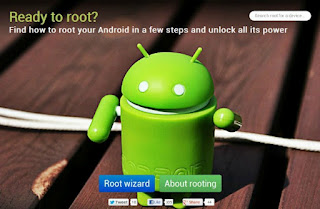Author: Vasistha ( As told to Aarabhi)
Photographer: Google
 |
| Many problems, One solution- Rooting! |
My niece Sameeksha ambled into our room and complained to
me: "Vashu mama! This game is stuck; I can't go to the next level!"
She then handed over my mobile to me and walked away in a huff.
Warning messages for "Low Memory" were blinking on
the screen. The internal memory was
running lower than 20MB leaving me cursing my supposedly high-end LG android
phone.
This memory problem kept bugging me and eating away at my
thoughts. The only way I had of increasing the internal memory was to uninstall
my favorite games and apps or clear the caches of most of the apps; hence
losing all settings and stored passwords.
"What's the point in having an
android if it can't autopilot itself?" asked my friend. To answer his
question I started digging. Apart from the temporary files mentioned above,
what else was eating up my memory? How could I analyze the memory usage of the
different sections of my phone? LG had also installed some apps like Bollywood
and Newspaper which were utterly unnecessary. I couldn’t uninstall them nor
move them to the SD card! How to get out of this vicious circle became the
question of the day.
This was where the Android OS's specialty came into light.
This OS is designed in such a way that we can do a lot of things and customize
the phone according to our interests or lifestyle. To do most things on the
android phone and to overcome problems of the memory sort, the only criteria required
is to ROOT the phone. Of course, once the phone is rooted its warranty expires;
but rooting will not harm the phone in any way unless you screw it up due to
lack of knowledge.
2. If you don't want to remove the app but move it to SD
card instead, then, just uninstall the APP and download the APP from market.
This time either it will directly be installed on SD card memory or you can
move it to SD memory once installed using another APP called APP2SD (available
in market)
3. You can take a backup of your preinstalled APPs or any
APP installed on your phone. This is very useful when your phone crashes, or
when you format the memory. You can even reinstall the APPs without downloading
from the market again and again. This can be done by copying these APPs to your
PC. This will also allow you to share the APPs across devices (to your Tablet
or another smart device).
To take backup of system APPs (like bluetoothclient.apk,
webbowser.apk, keyboard.apk etc), you'll have to use APPs like Titanium backup,
Appsbackup etc. You have to give root permission for these APPs before you take
backup.
 |
| Changing LCD density using rooting |
4. If you want to see which portion of your phone is taking
up how much memory, use APPs like "Storage Analyser" , it requires
root permision to see entire phone and SD card memory usage in depth. If you
are an APP developer or Inventor, you would be building APPS of your own. When
you move them to your phone, a copy of the .apk file is moved to
/data/local/tmp. To view this path you need root permisiion. Normal file
browser will not show this path and files inside this folder. But Storage Analyser
shows the exact path enabling you to delete or add files according to your preference.


No comments:
Post a Comment